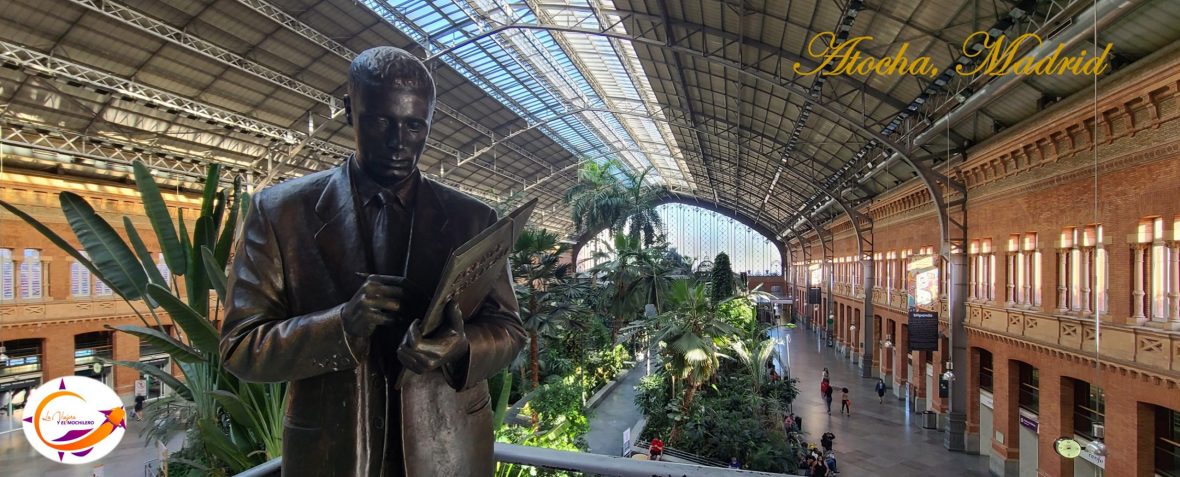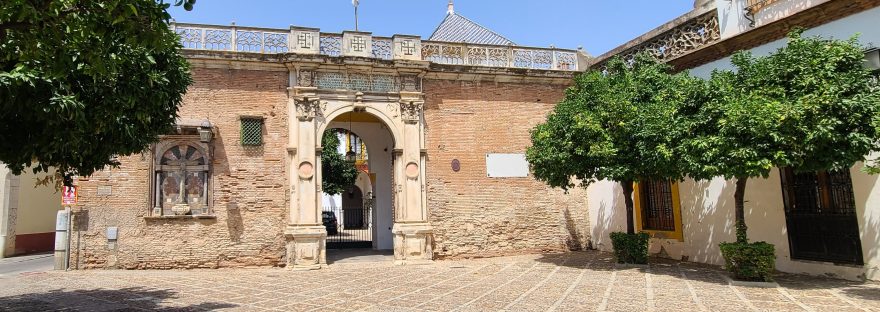In the historic center of the city of Seville, is the best Andalusian noble building that is a clear example of Sevillian architecture of the sixteenth century, is the House of Pilate. Inspired by the Italian Renaissance, it was built in the late fifteenth and early sixteenth centuries, originally called the Palace of the “Adelantados Mayores de Andalucía”.
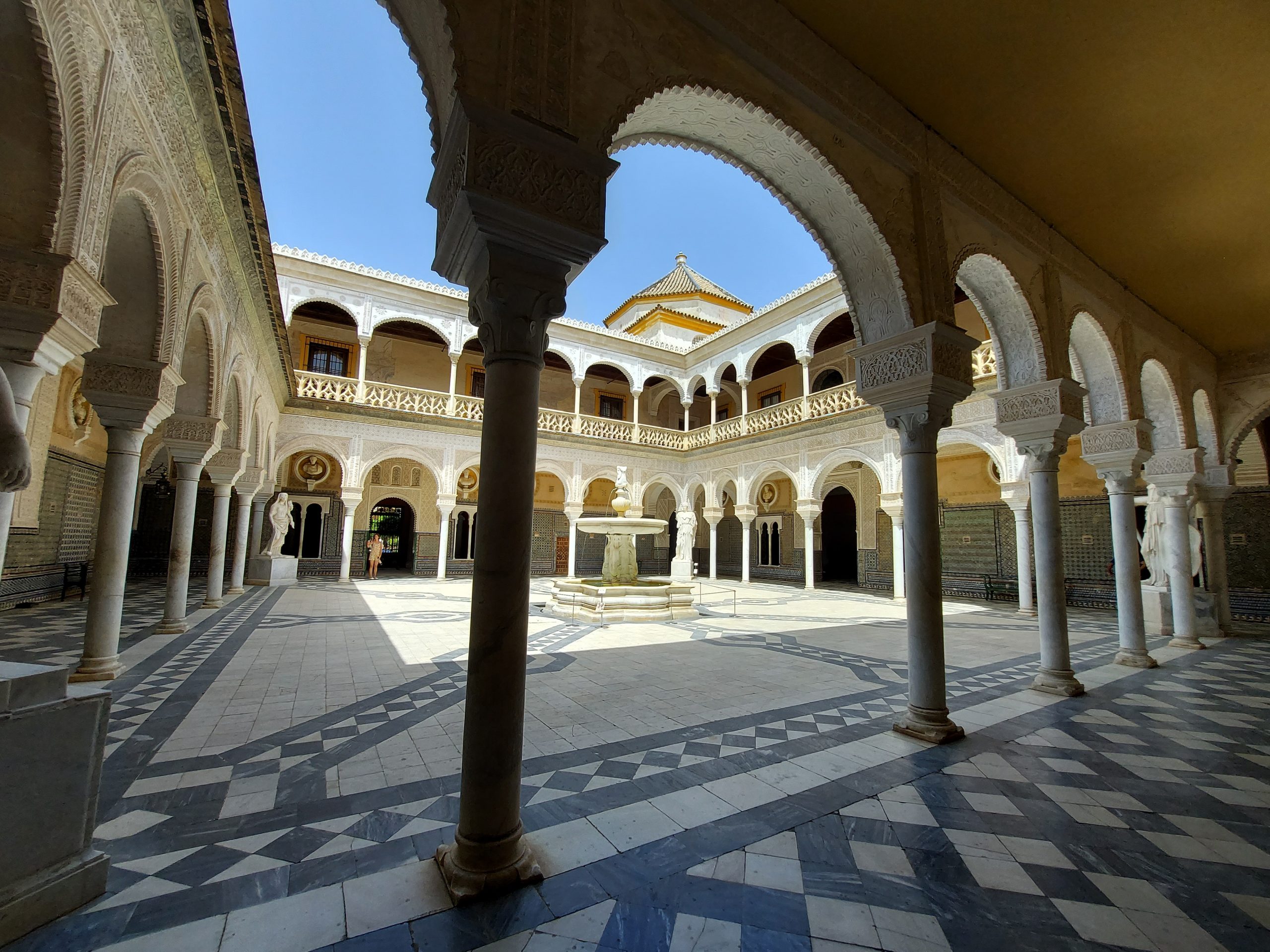
The construction of the palace began in 1483, by initiative and desire of Pedro Enríquez de Quiñones (IV Major Adelantado of Andalusia) and his second wife Catalina de Ribera. Ten years later, in 1493, with the death of Pedro Enríquez, Catalina was in charge of starting the initial configuration of the palace. Her son Fadrique Enríquez de Ribera (1476-1539) and her grandson Per Afán de Ribera y Portocarrero (1509-1571) expanded and completed the decoration of the house.
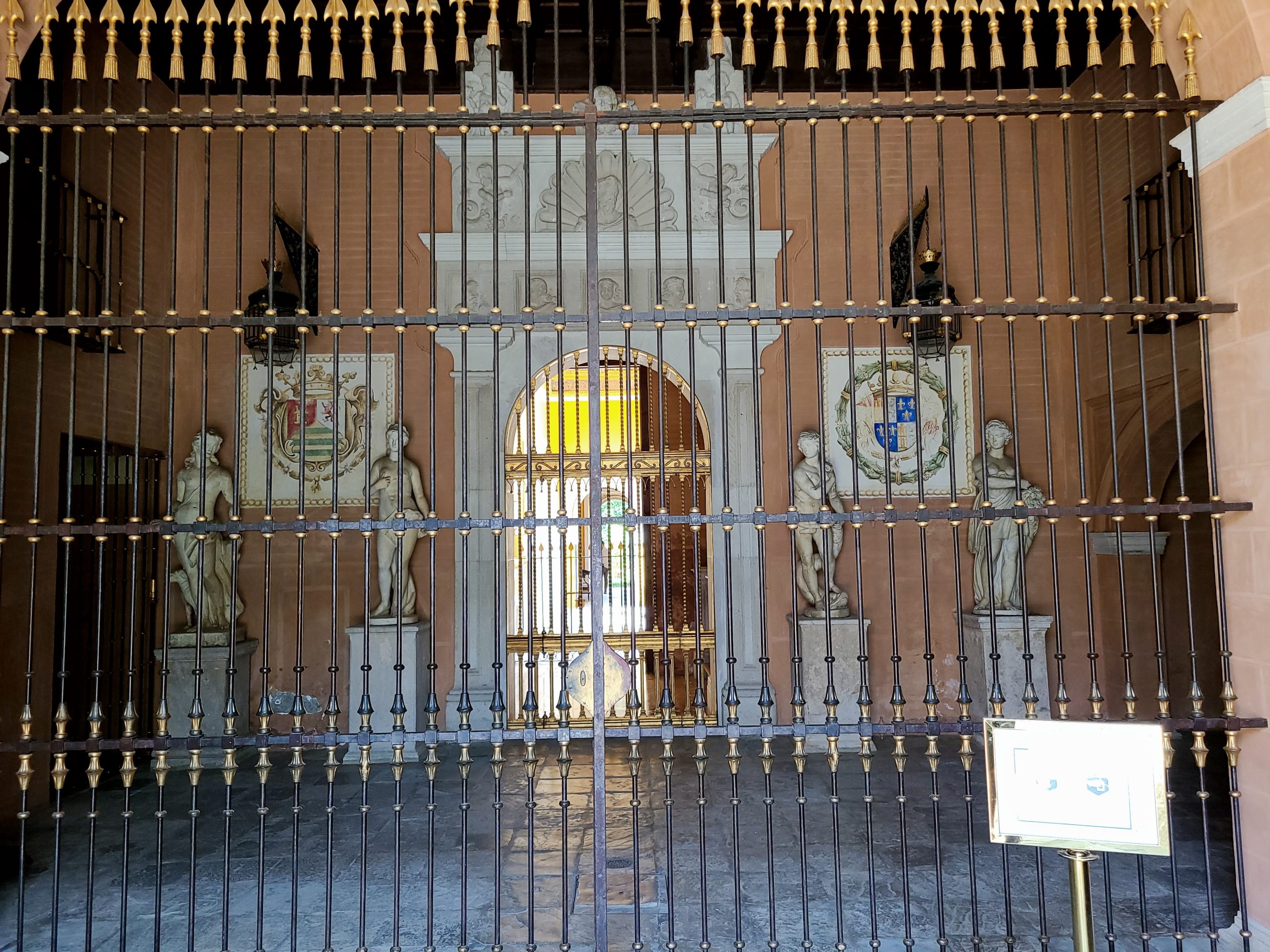
It is precisely thanks to Fabrique Enriquez, its second owner, that it is known today as the House of Pilate. It is said that in 1518, returning from a pilgrimage to Jerusalem, Don Fabrique calculated the distance between the house of Pontius Pilate and Golgotha, the mountain where Jesus was crucified. Thus he discovered that it was the same distance between his house and the Cruz del Campo, a famous shrine of Seville.
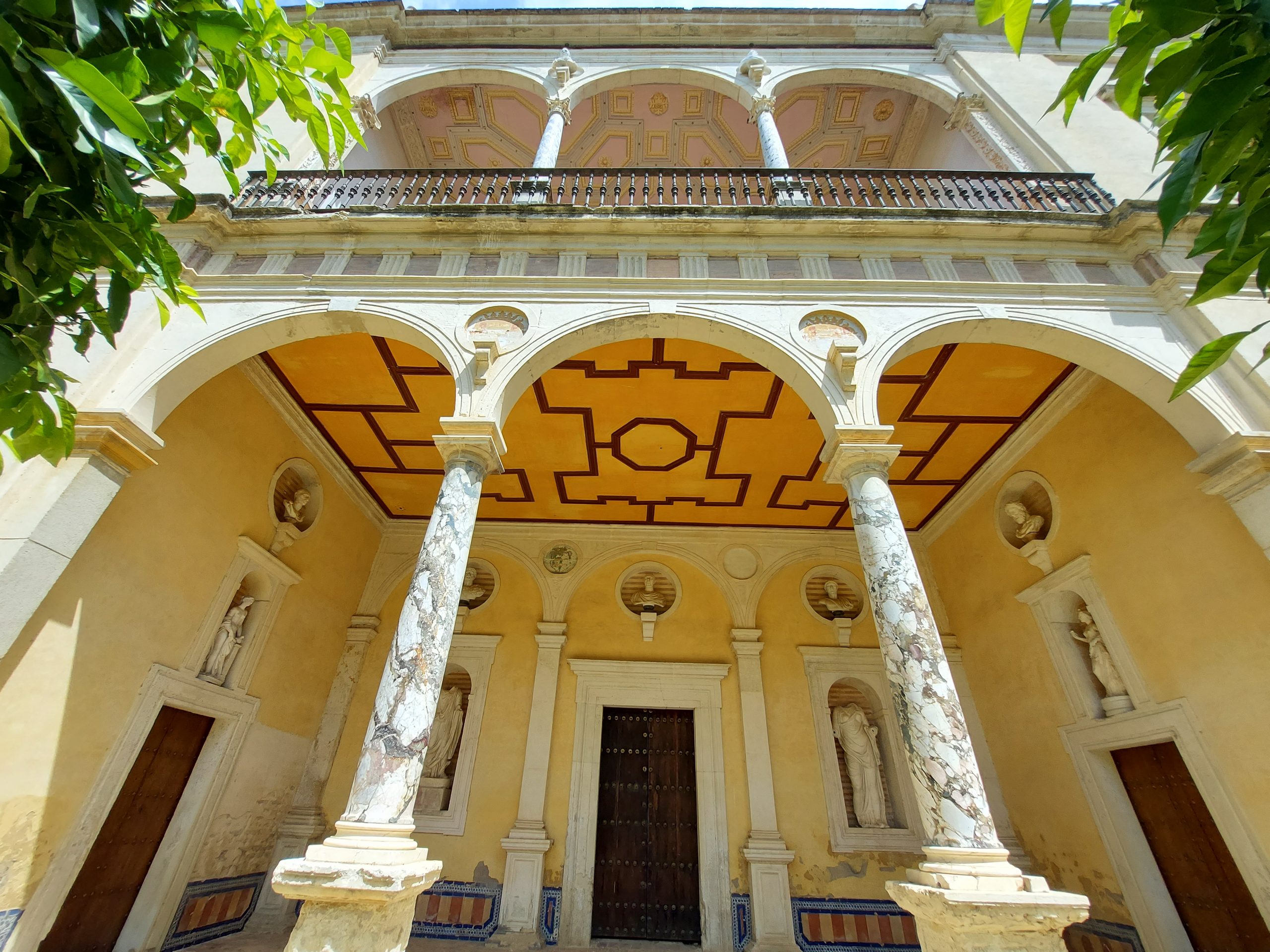
Since then, not only his house was named the House of Pilate, but also the Sevillian tradition of the Stations of the Cross began, starting from his house to the Cruz del Campo. The first station of penitence would be in the square, on the facade, where there is a marble cross.
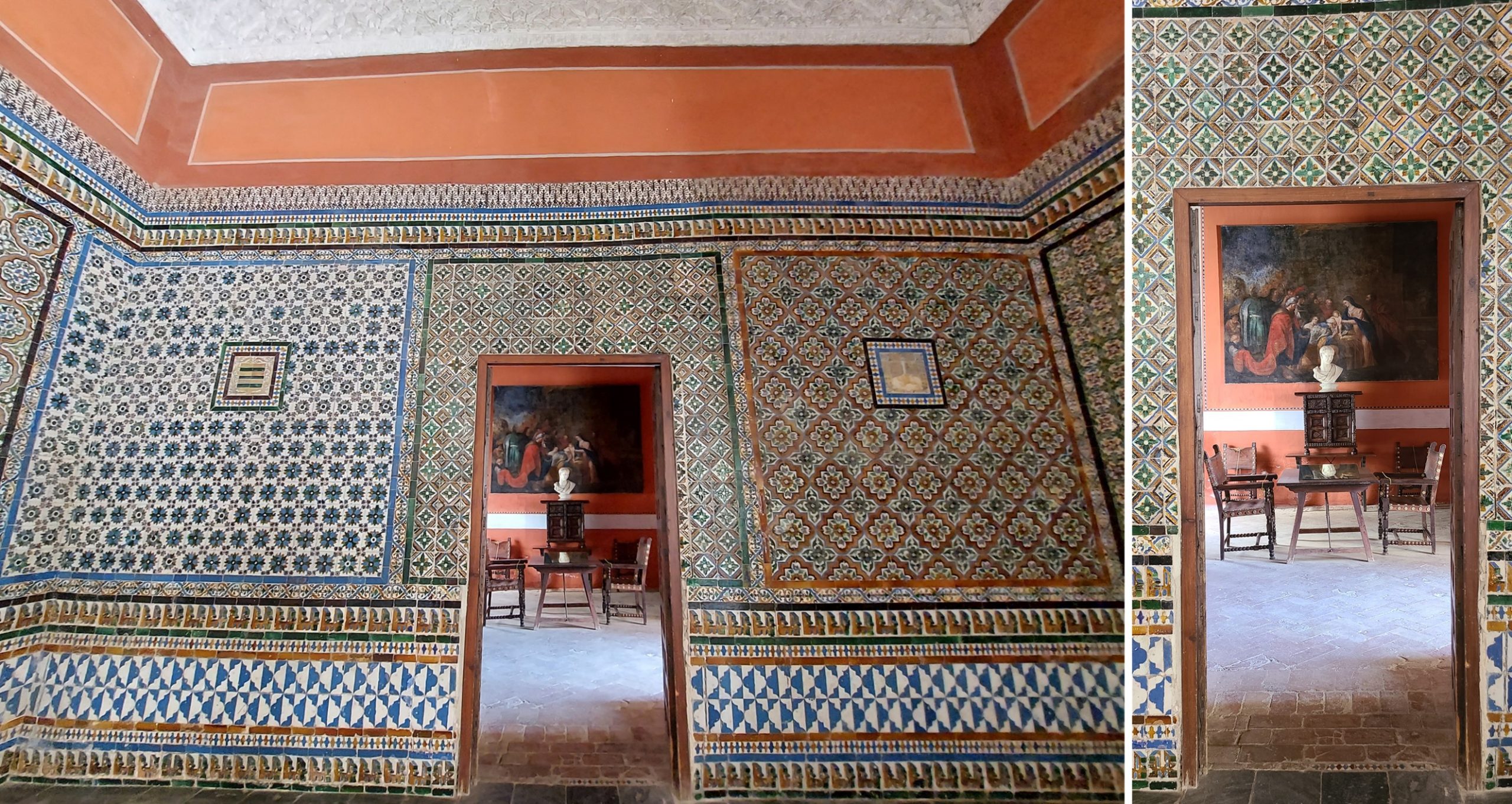
The XVI century was the time of greatest splendor for the House of Pilate, where Don Fadrique Enriquez de Ribera, who had been in Italy, transferred to his Sevillian palace, the Renaissance style, combining it with the Andalusian Mudejar art. This is how this structure is presented to us so beautifully, through the combination of materials such as slabs, plasterwork, sculptures, reliefs and richly carved wooden coffered ceilings.
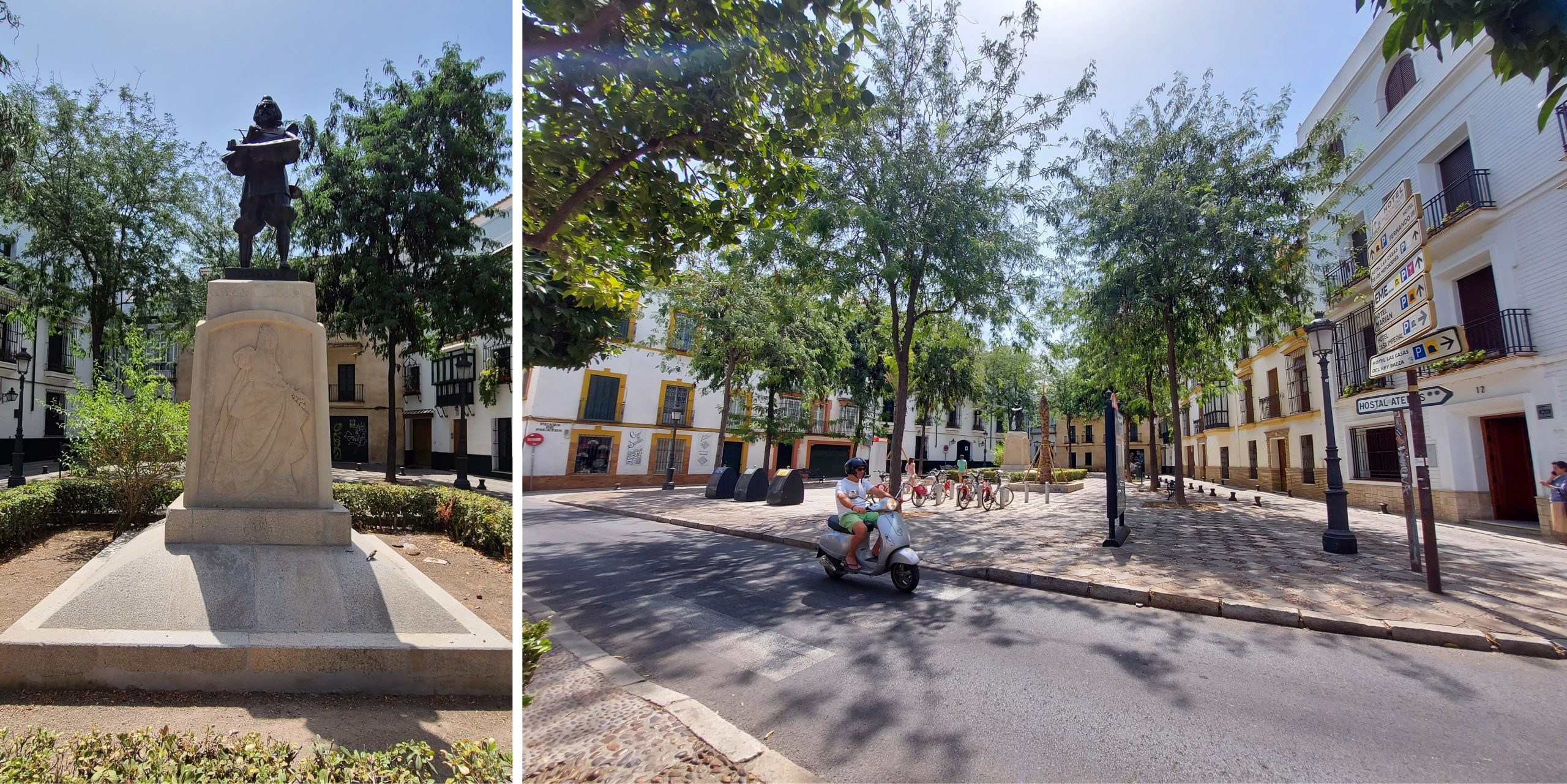
The tour of the House of Pilate begins in the square of the same name, where the main facade of the palace opens. This square was originally formed as an extension of the palace, being property of the family, all the surrounding houses. It was used for bullfighting festivals, among other uses. In the other section of the main facade is a two-story building in which the loggia on the upper level stands out, known by the Sevillian people as Ecce Homo.
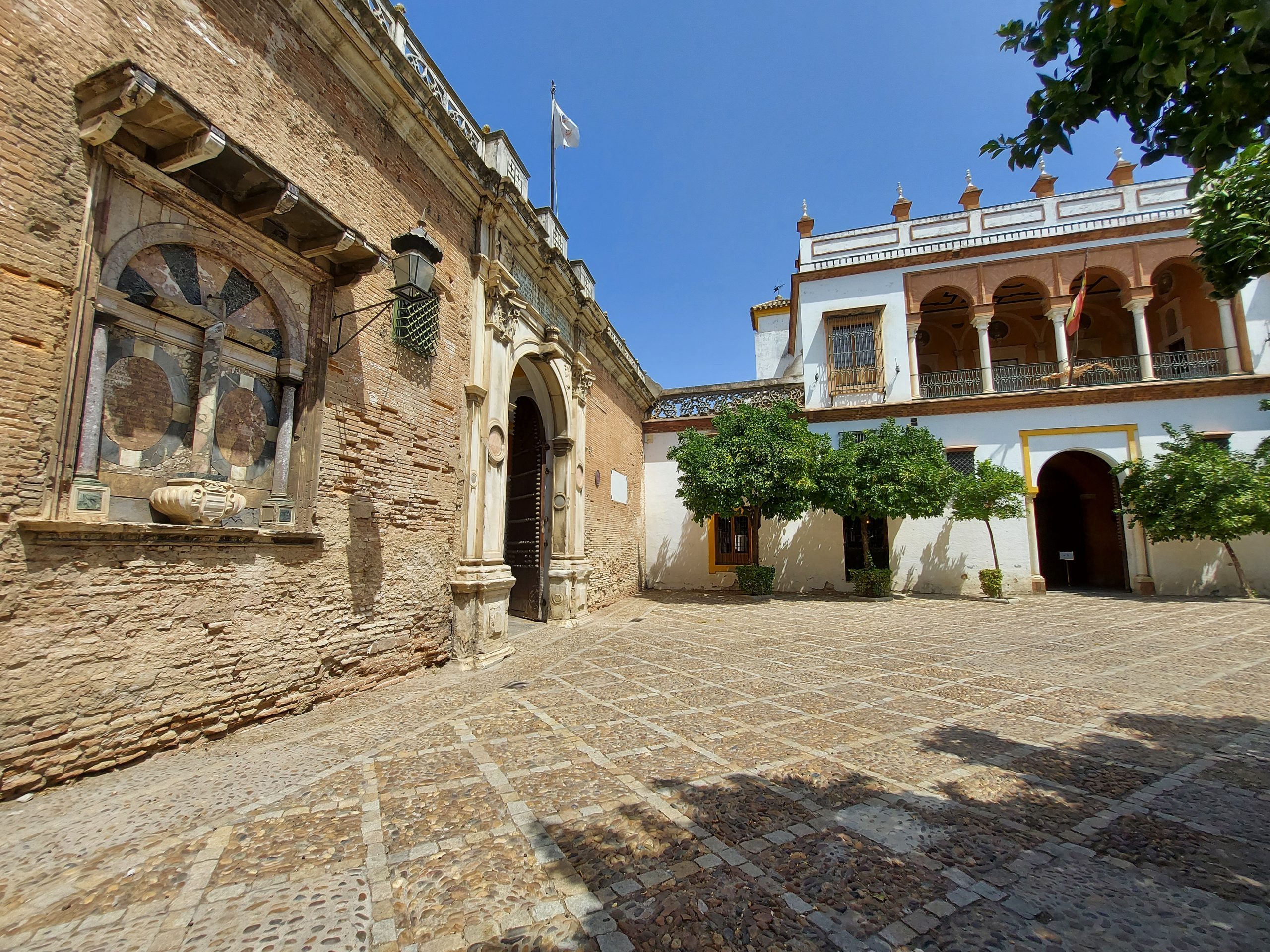
The House of Pilate is accessed through a marble portal, built in 1529 in Genoa, in Renaissance style in the form of a triumphal arch. Next to the doorway is a niche with a cross of colored jasper, from 1630. A very appropriate stone for this type of ornamentation.
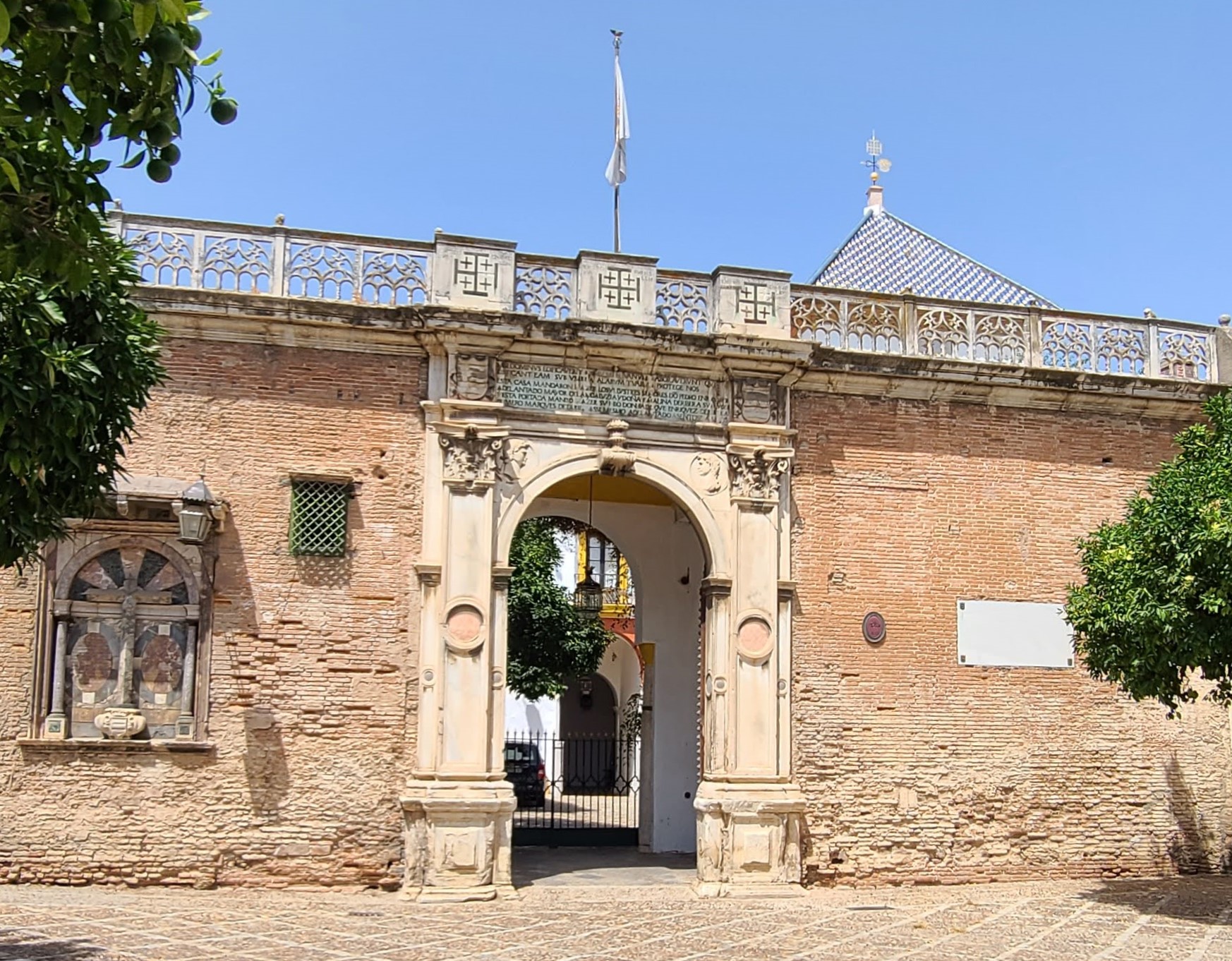
The house has two floors, the lower one being the most important.
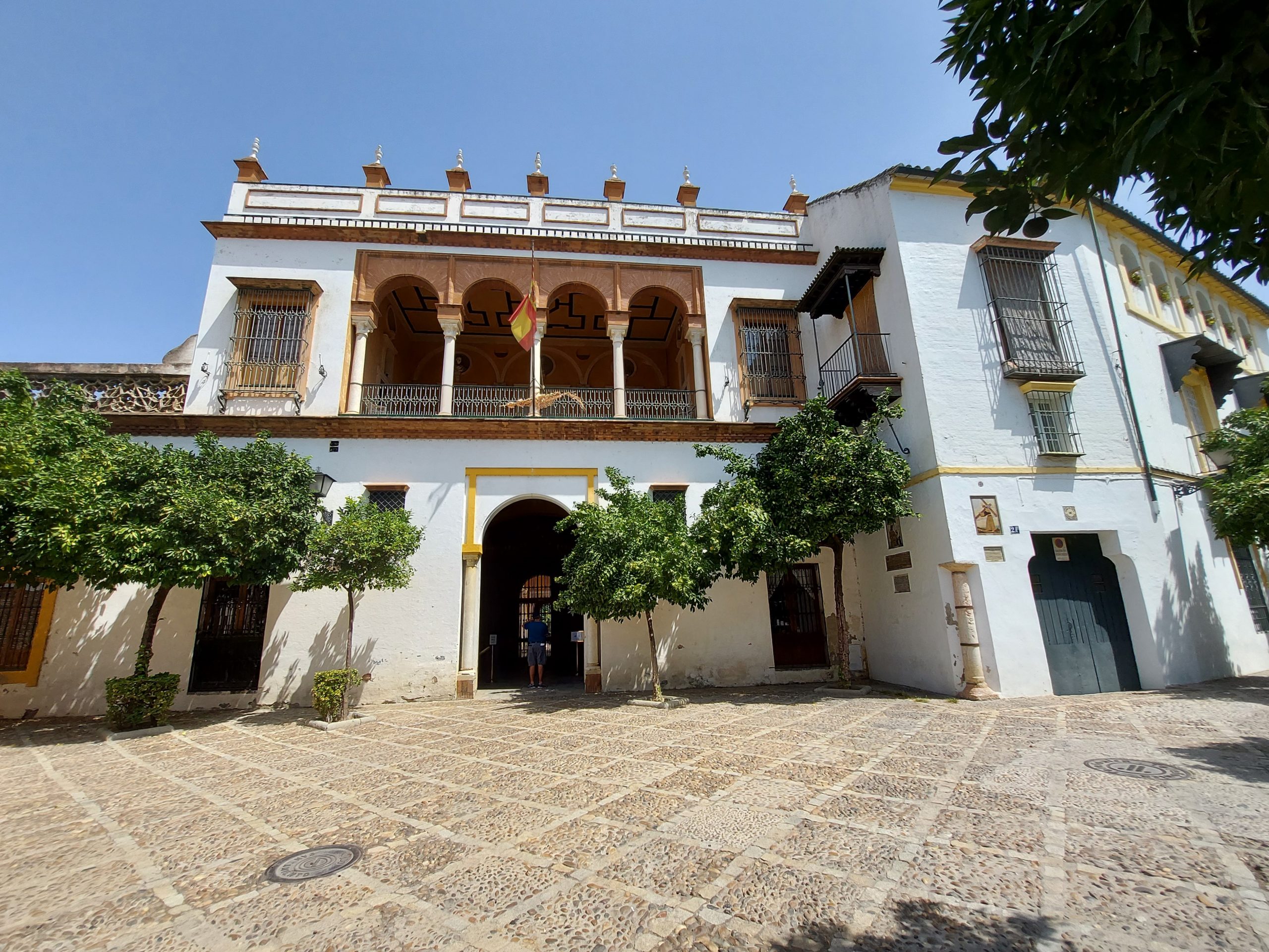
The upper floor is reached by an impressive tiled staircase with wooden coffered ceilings. The upper floor is only open to the public on some occasions and the visit is guided. In fact, being the permanent residence of the Dukes of Medinaceli, photography is not allowed in this area of the residence, which houses some very beautiful collections of paintings and tapestries. But, at least, we were able to capture the mural paintings corresponding to the primitive decoration of the residence.
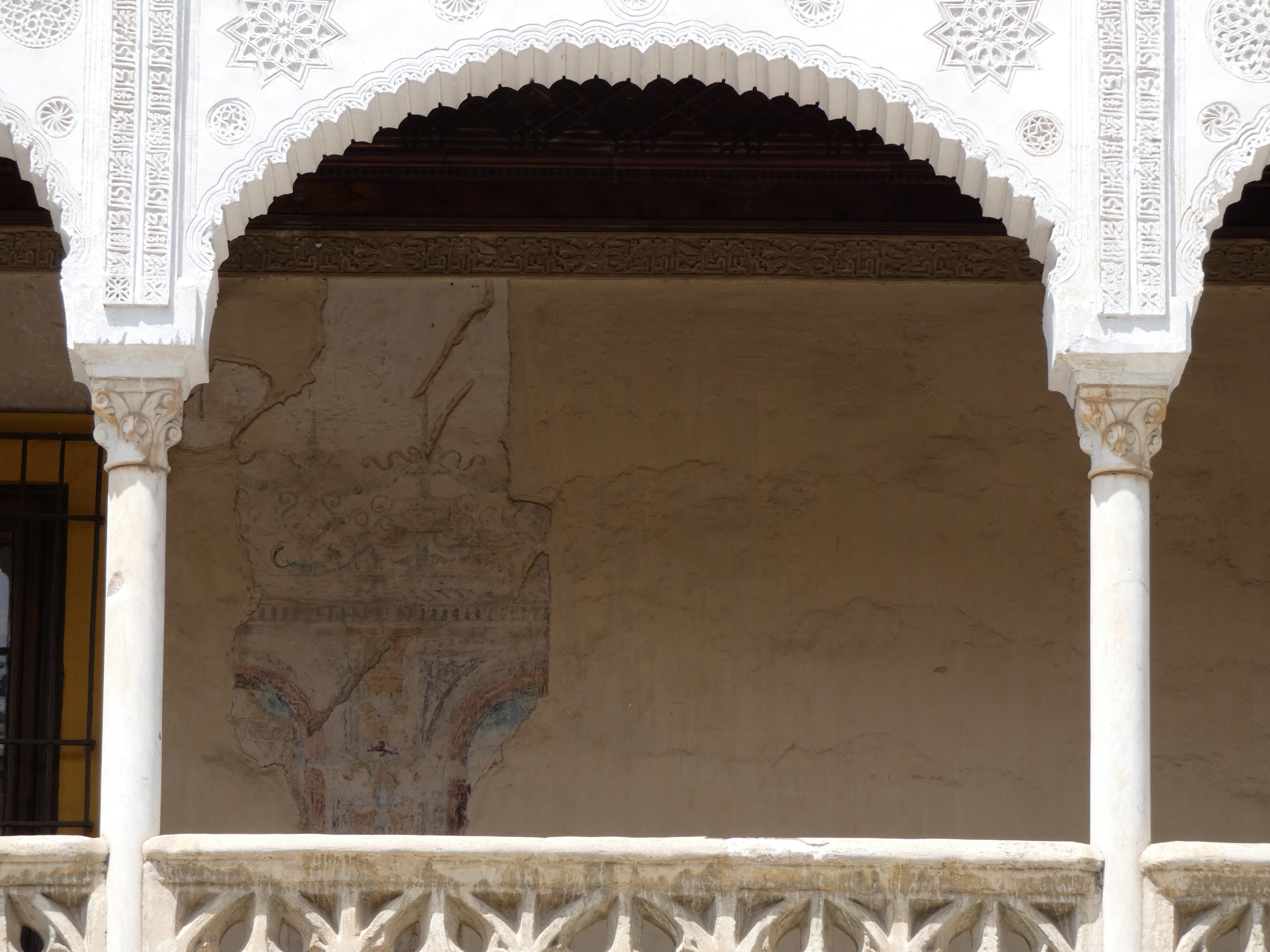
The palace has two courtyards: one at the entrance of the house where you buy the tickets and the main courtyard. It is the main courtyard that is a marvel. When you look at it, you might think that its style is only Moorish, but in reality there is an extraordinary combination of medieval Gothic, Muslim and Renaissance.
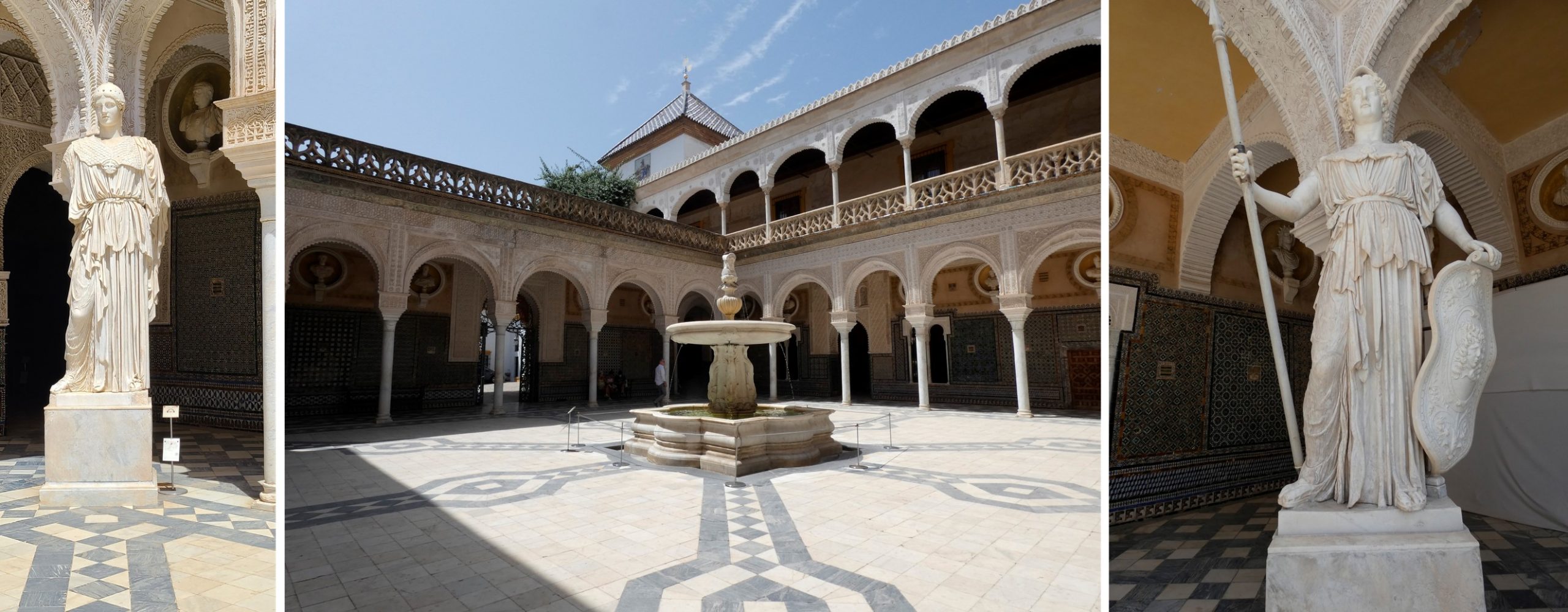
Typical of the Muslim style is the use of plasterwork and tiles, as well as the irregular distribution of the arches; on the other hand, the balustrades of the high gallery are Gothic; and typical of the Renaissance style are the fountain and the columns. In the main courtyard there is an extraordinary collection of tiles, made between 1536 and 1538.
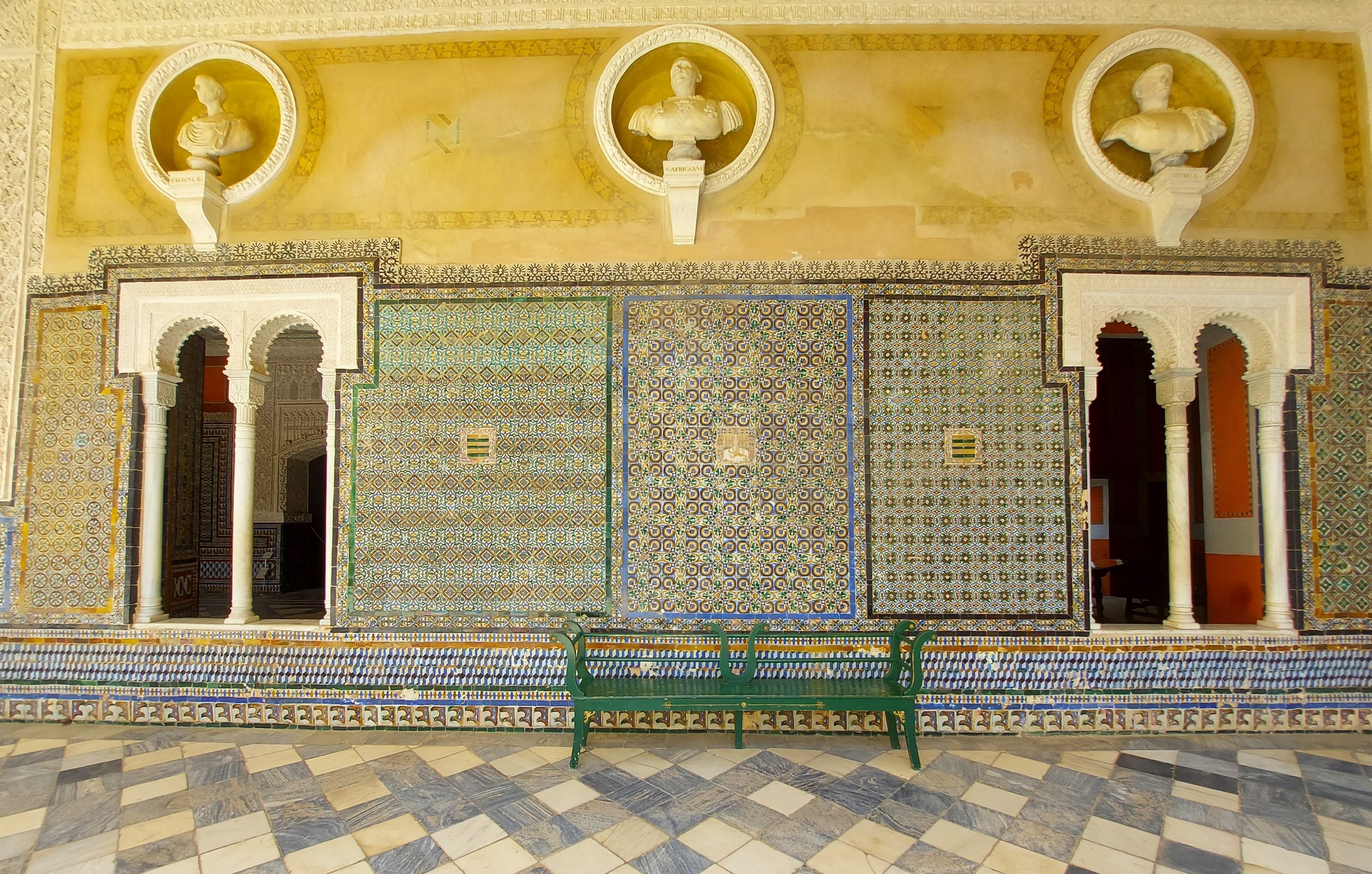
To the right of the main courtyard is the first room known as the Hall of the Prefect or Hall of Tiles. The Moorish details in the plasterwork and tiles are quite a beauty. Upon entering we immediately think of the Alhambra in Granada.
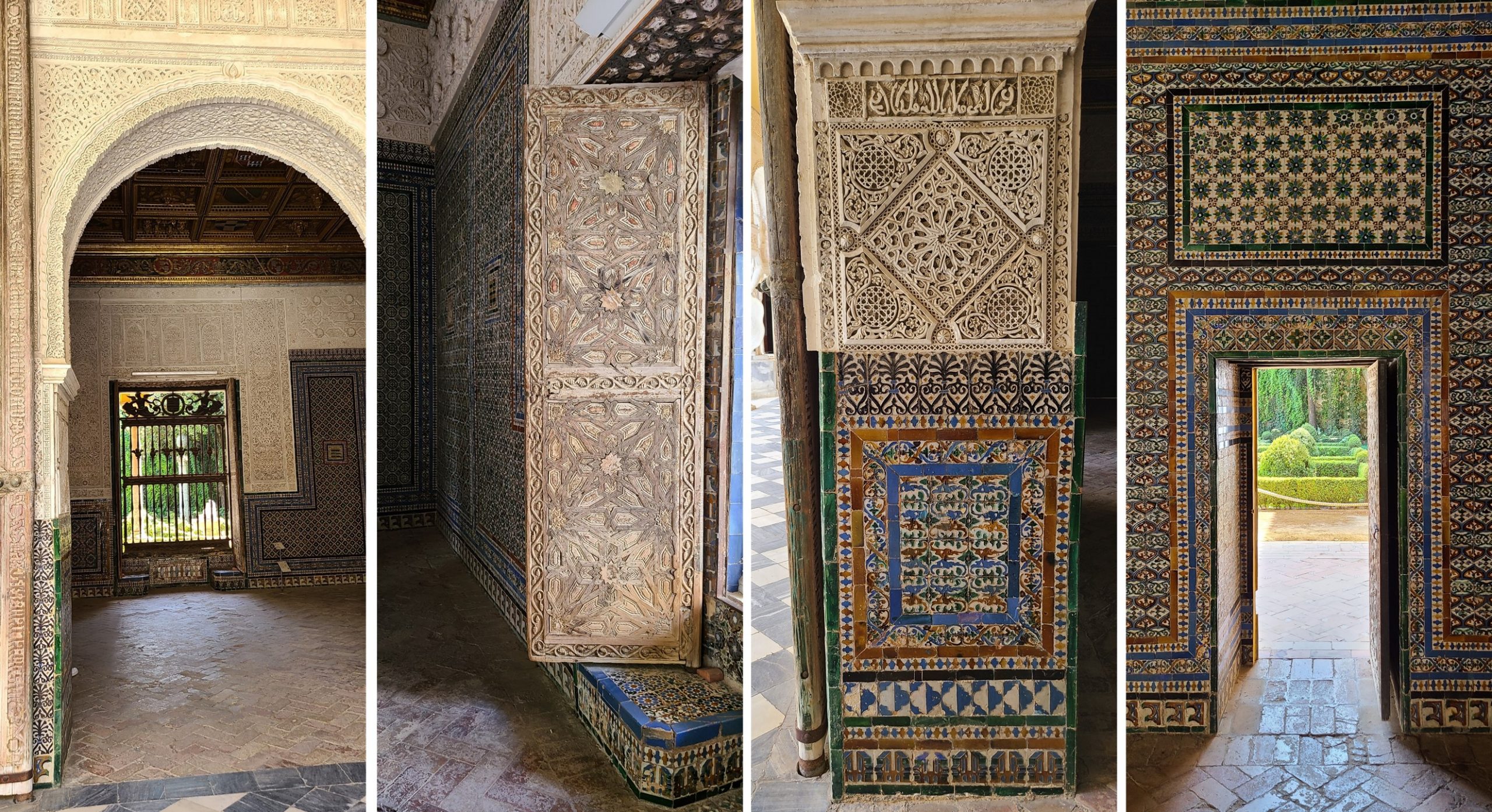
From the Hall of the Prefect we connect to the “Zaquizamí” corridor, which opens to the Small Garden. Here one finds busts to Roman and Renaissance tombstones and inscriptions.
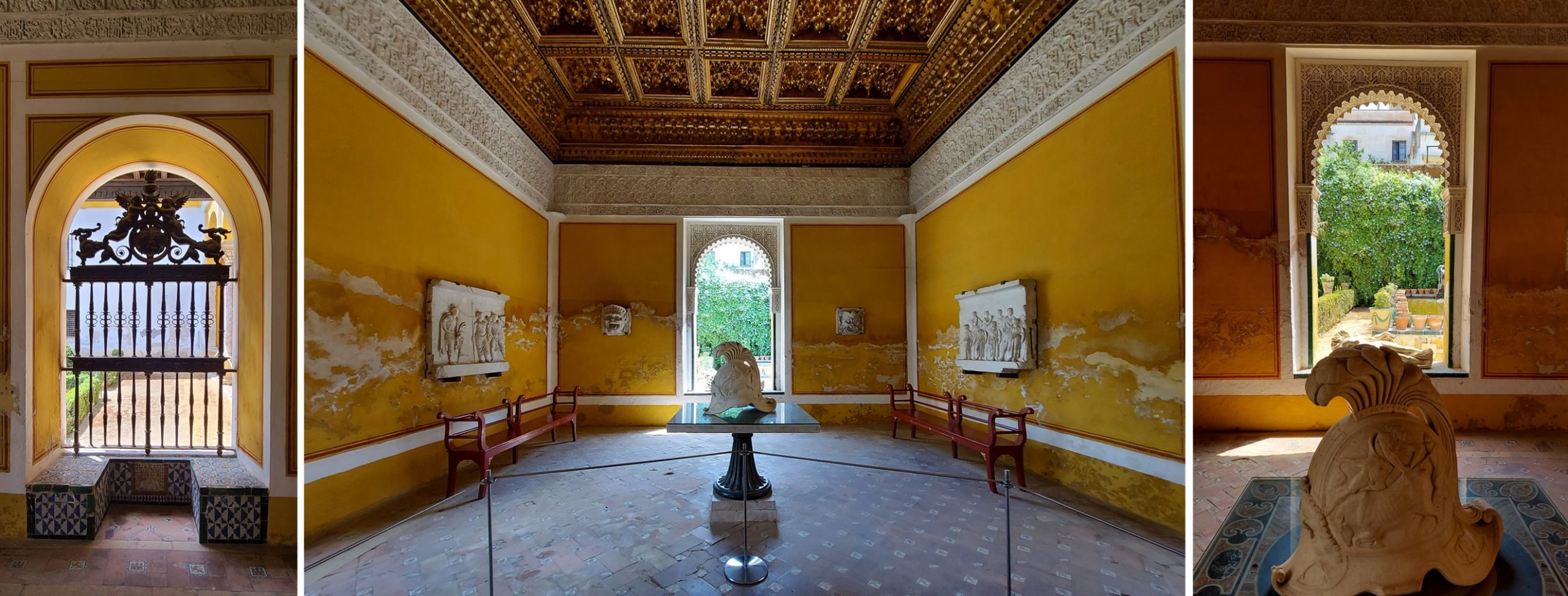
Then follow the path to the Golden Hall, a pavilion that opens to the Small Garden, which is covered by a golden alfarje and with one of the most important plateresque grilles of the city. Inside are reliefs and fragments of Roman friezes, an archaic Greek bust and another Roman bust.
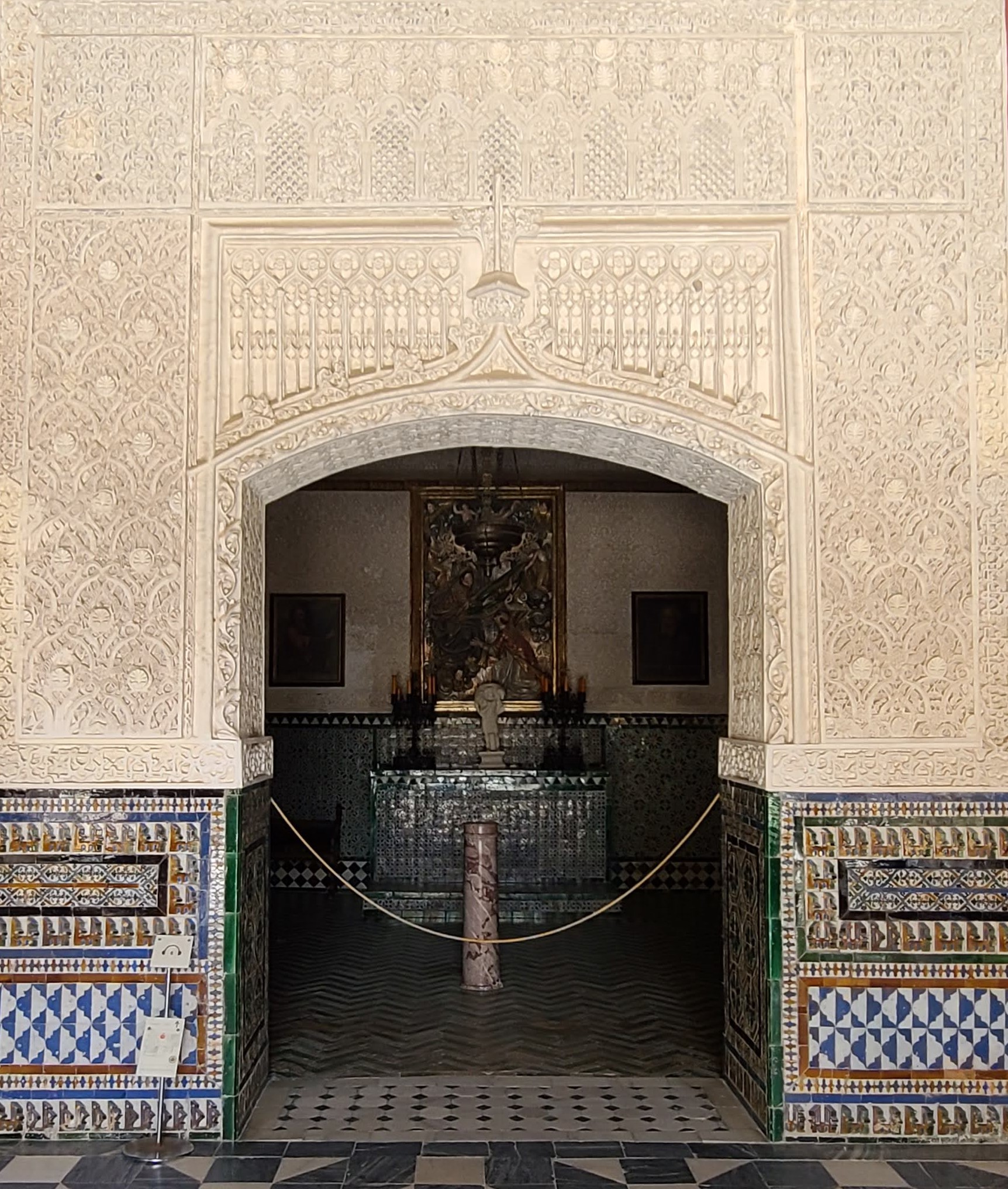
The Chapel is the oldest part of the palace and has a ribbed vault and Gothic moldings in the window. Above the altar table is a statue of the Good Shepherd, similar to one in the Vatican. In the center stands the column that has given the name of the Chapel of the Flagellation to this enclosure.
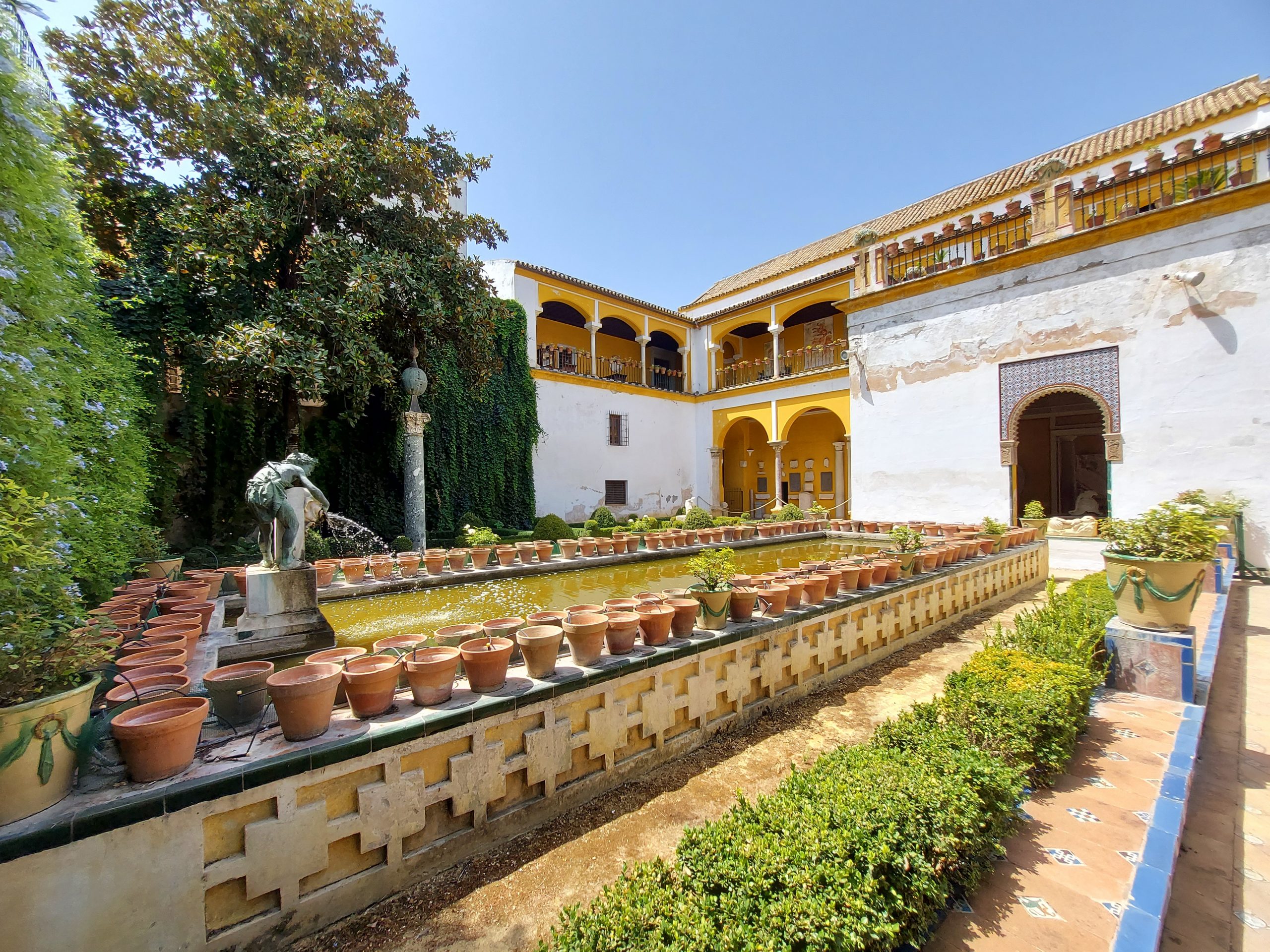
Upon arriving to the Small Garden that conserves in the form of a pond the water deposit, water that was received at the house from the aqueduct of “Los Caños de Carmona” and was decanted here. In fact, the House of Pilate is one of the few privileged structures that had water coming directly from “Los Caños de Carmona”, a distinction held by only about twenty homes had and that was permitted by the “Alcázar”.
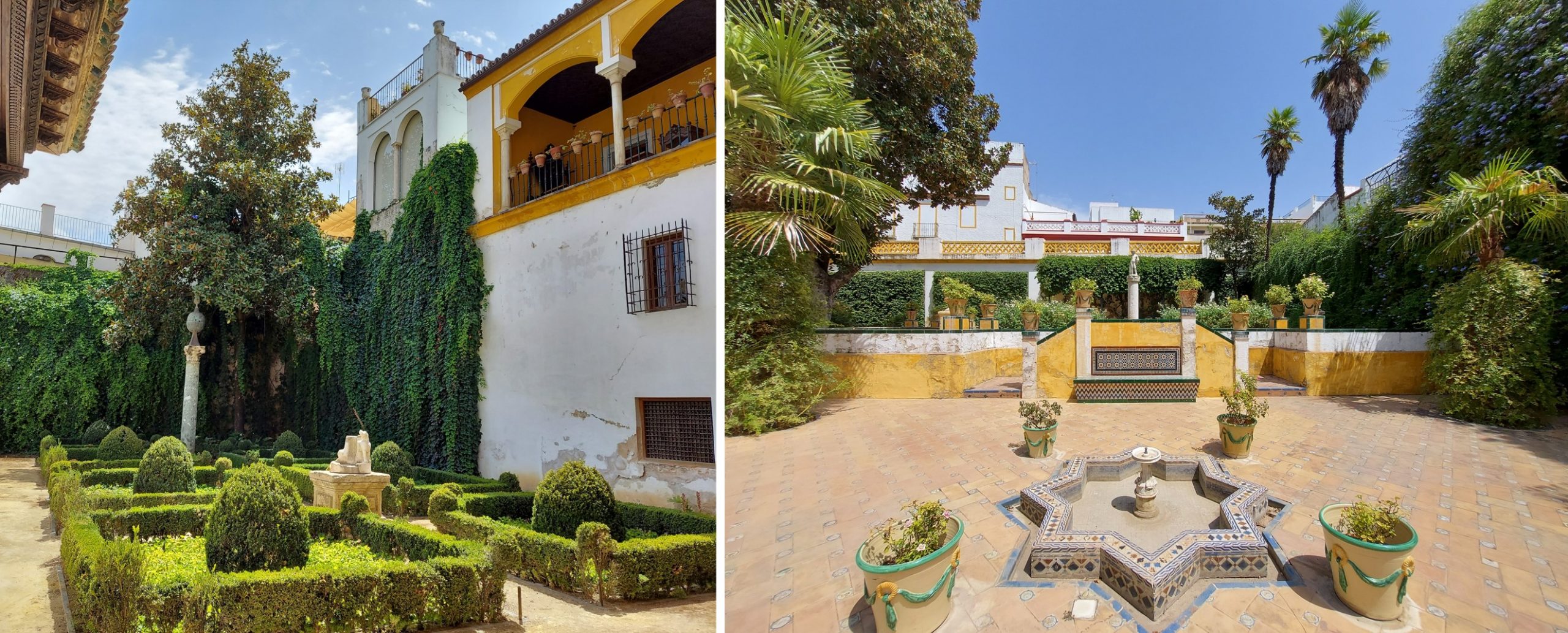
The Small Garden is an open space delimited by the facades of the palace. The design of this garden is a geometric one of walls and flowerbeds in which classical elements, such as columns and statues, are interspersed. It is structured in three zones of different style and composition. The first, rectangular, is laid out in front of the “Zaquizamí” corridor. The second zone is formed by two rectangular terraces of different levels. The third enclosure has a closed geometric layout, defining a central gazebo.
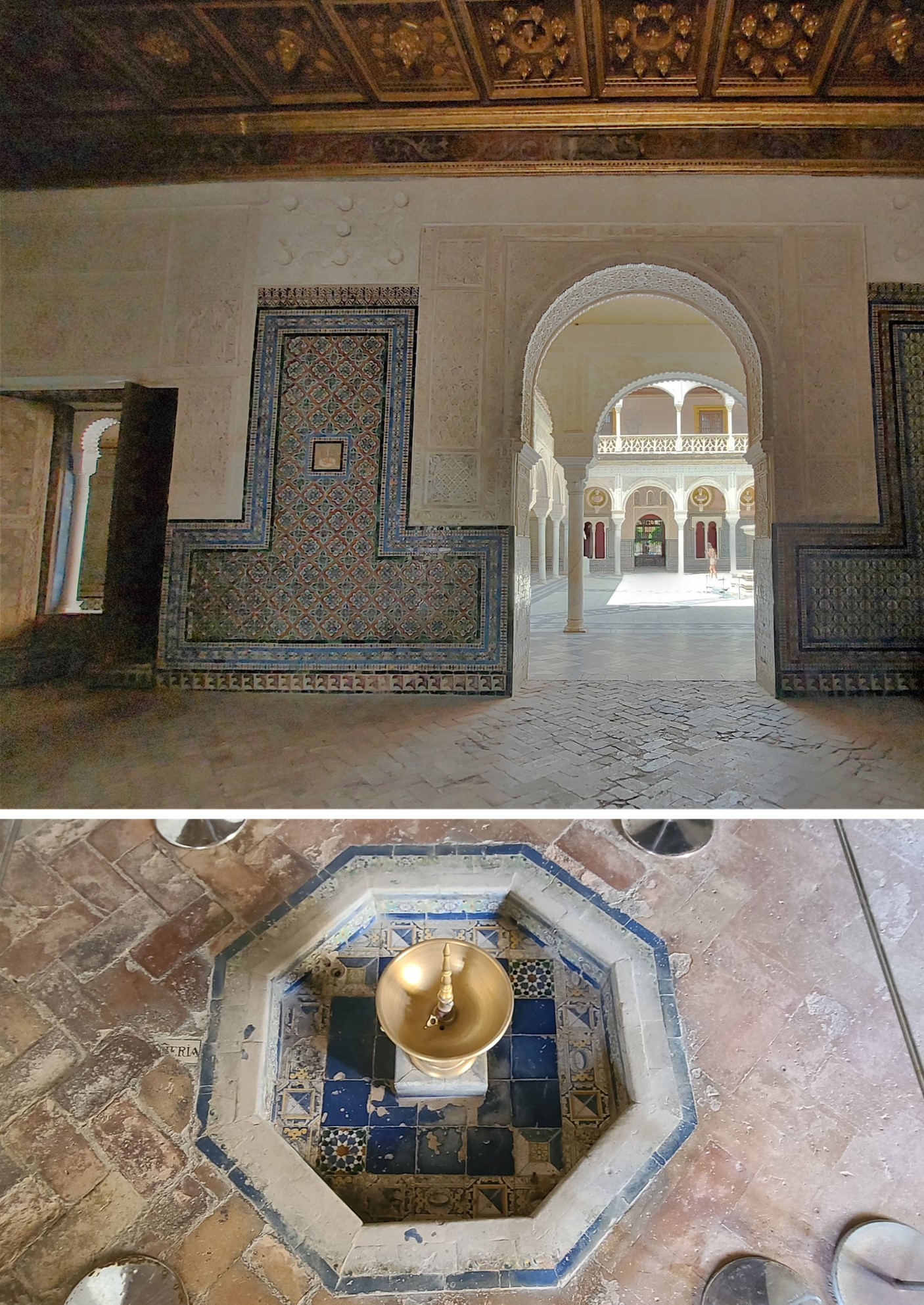
Before entering the Great Garden, we pause at Pilate’s Cabinet, where a tiled cloth stands out. A small bronze Mudejar fountain stands in the center, affirming the importance of water.
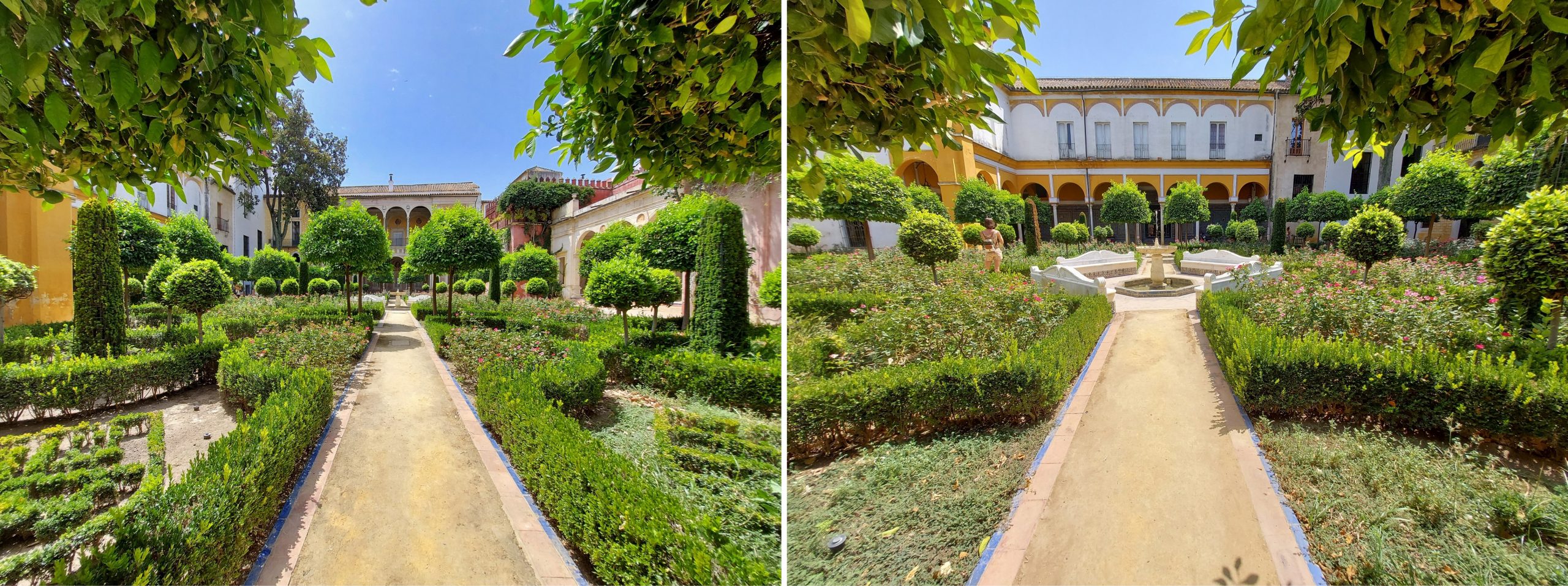
The Great Garden, was always part of the palace possessing a lot of vegetation. Originally it was an orchard and in the 16th century the impressive loggias or galleries open to the garden where a varied sample of classical sculptures are exhibited. Rectangular in shape, it is arranged following a unitary geometric layout. The axis of the garden is marked by a marble fountain on an octagonal basin, covered by a metal structure. This garden is one of the jewels of this palace.
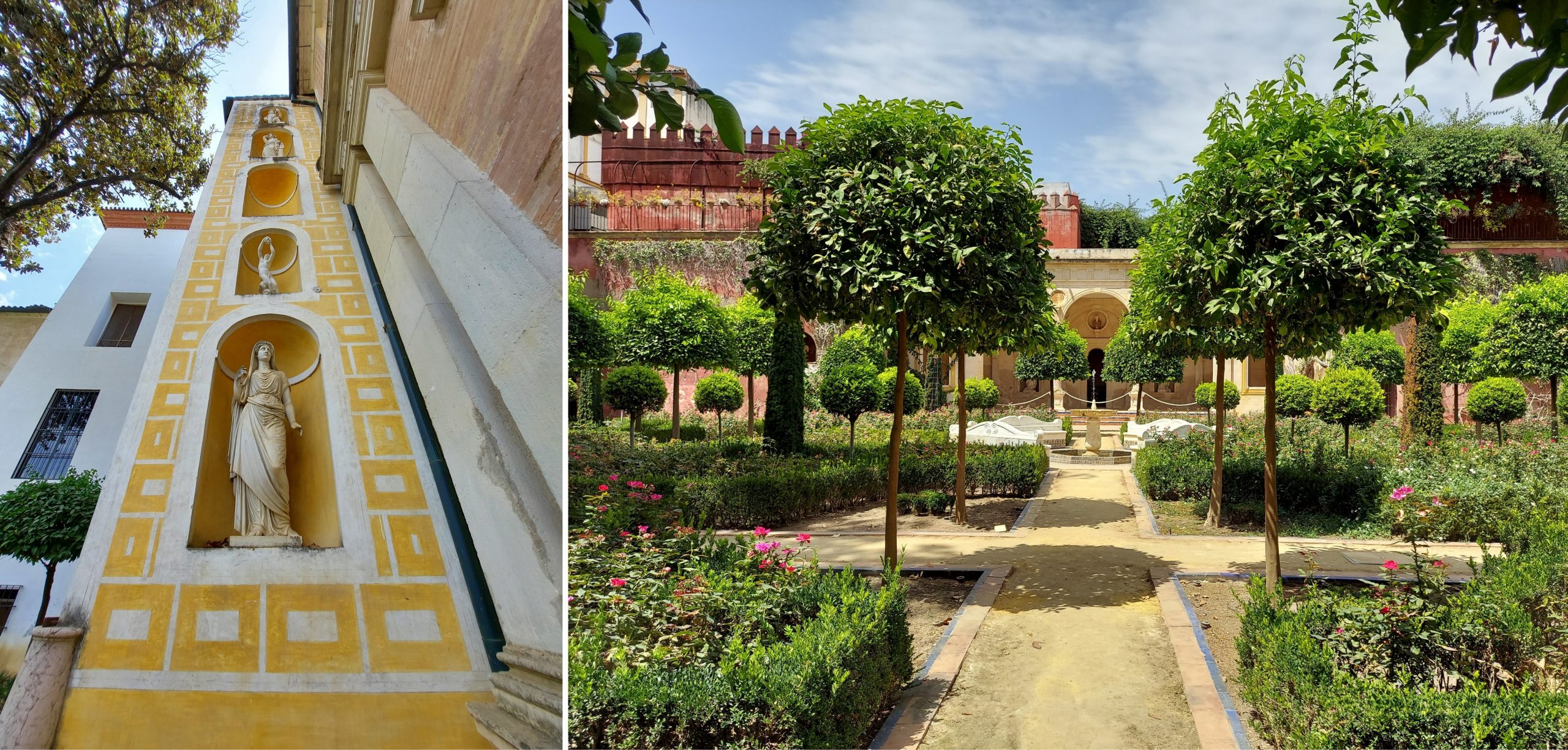
Definitely, this palace is a very clear example of what can be achieved with the combination of styles, materials and unique artistic elements of great beauty. A visit to Seville should include a tour of the House of Pilate.
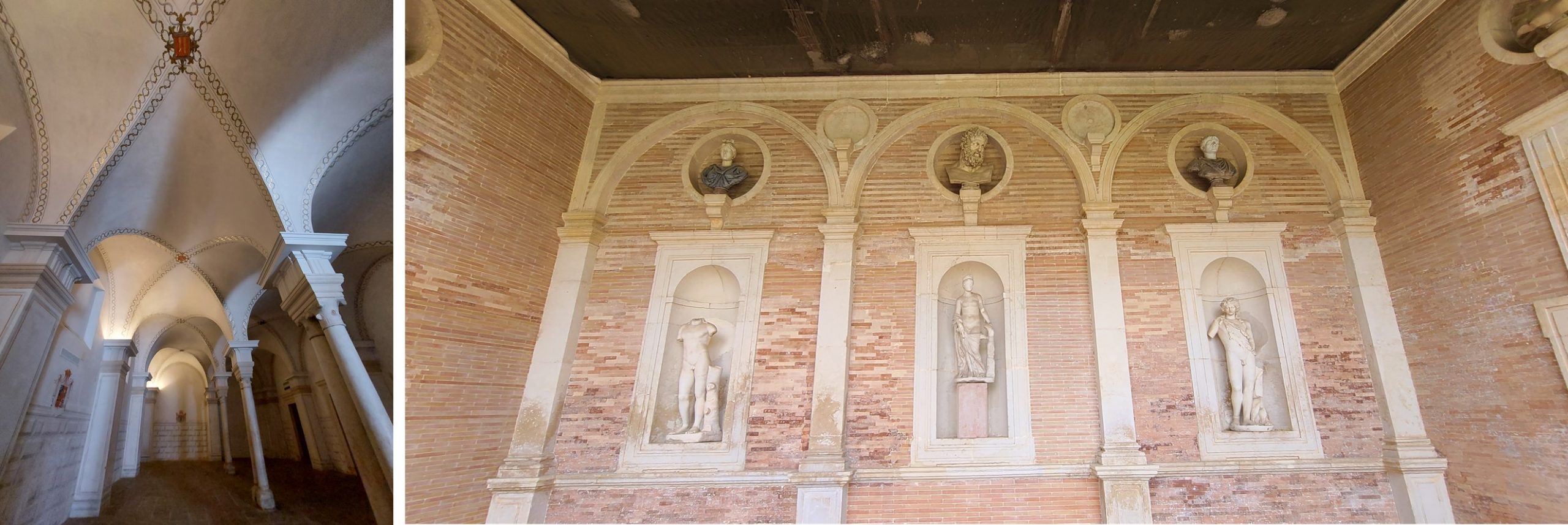
Resources:
- https://es.wikipedia.org/wiki/Casa_de_Pilatos_(Seville)
- https://elcorreoweb.es/sevilla/casa-de-pilatos-un-palacio-de-ensueno-AA3389389
- https://cometeelmundo.net/casa-pilatos-visita-horario-precio
